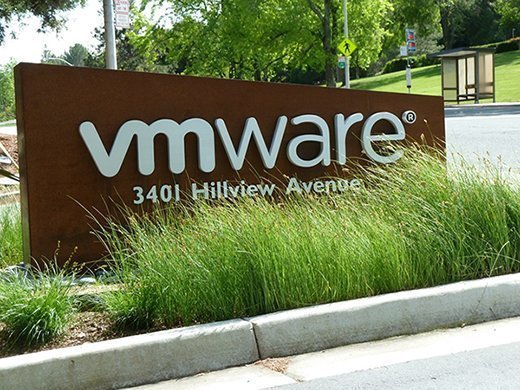VMware Definition
VMware is a virtualization and cloud computing software provider based in Palo Alto, California. Founded in 1998, VMware is a subsidiary of Dell Technologies. EMC Corporation originally acquired VMware in 2004; EMC was later acquired by Dell Technologies in 2016. VMware bases its virtualization technologies on its bare-metal hypervisor ESX/ESXi in x86 architecture.
With VMware server virtualization, a hypervisor is installed on the physical server to allow for multiple virtual machines (VMs) to run on the same physical server. Each VM can run its own operating system (OS), which means multiple OSes can run on one physical server. All of the VMs on the same physical server share resources, such as networking and RAM.
Diane Greene, Scott Devine, Mendel Rosenblum, Edward Wang and Edouard Bugnion founded VMware, which launched its first product — VMware Workstation — in 1999. The company released its second product, VMware ESX in 2001.
VMware’s current CEO is Patrick P. Gelsinger, appointed in 2012.

VMware products
VMware products include virtualization, networking and security management tools, software-defined data center software and storage software.
Data Center and Cloud Infrastructure
VMware vSphere is VMware’s suite of virtualization products. VMware vSphere, known as VMware Infrastructure prior to 2009, includes ESXi, vCenter Server, vSphere Client, vMotionand more. As of April 2017, the most current version is vSphere 6.5, which is available in three editions: Standard, Enterprise and Enterprise Plus.
Networking and Security
VMware NSX is a virtual networking and security software offering created when VMware acquired Nicera in 2012. NSX allows an admin to virtualize network components, enabling them to develop, deploy and configure virtual networks and switches through software rather than hardware. A software layer sits on top of the hypervisor to allow an administrator to divide a physical network into multiple virtual networks.
VMware vRealize Network Insight is a network operations management tool that enables an admin to plan microsegmentation and check on the health of VMware NSX. VRealize Network Insight relies on technology from VMware’s acquisition of Arkin in 2016. VRealize Network Insight collects information from the NSX Manager; it also displays errors in its user interface, which helps troubleshoot an NSX environment.
SDDC Platform
VMware Cloud Foundation is an integrated software stack that bundles vSphere, VMware Virtual SAN (vSAN) and VMware NSX into a single platform through the SDDC Manager. An admin can deploy the bundle on-premises as a private cloud or run it as a service within a public cloud. An administrator can provision an application immediately without having to wait for network or storage.
Storage and Availability
VMware vSAN is a software-based storage feature that is built into the ESXi hypervisor and integrated with vSphere; it pools disk space from multiple ESXi hosts and provisions it via smart policies, such as protection limits, thin provisioning and erasure coding.
VMware Site Recovery Manager (SRM) is a disaster recovery management product that allows an administrator to create recovery plans that are automatically executed in case of a failure. Site Recovery Manager allows admins to automatically orchestrate the failover and failback of VMs. SRM also integrates with NSX to preserve network and security policies on migrated VMs.
VMware vCloud NFV is a network functions virtualization platform that enables a service provider to run network functions as virtualized applications from different vendors. NFV provides the same benefits of virtualization and cloud to a communications service provider who previously relied on hardware.
Cloud Management Platform
The vRealize Suite is a group of software that allows a user to create and manage hybrid clouds. The vRealize Suite includes vRealize Operations, vRealize Log Insight, vRealize Automation and vRealize Business for Cloud. With this bundle, an administrator can deploy and manage VMs on multiple hypervisors or cloud platforms from a single management console.
Digital Workspace
Workspace ONE allows an administrator to control mobile devices and cloud-hosted virtual desktops and applications from a single management platform deployed either in the cloud or on-premises. The Workspace ONE suite includes VMware AirWatch, Horizon Air and Identity Manager.
Identity Manager uses technology from VMware’s acquisition of TriCipher in 2010. It’s an identity as a service product that offers single sign-on (SSO) capabilities for web, cloud and mobile applications. Identity Manager gives SSO access to any application from any device, based on the policies created.
Enterprise Mobility Management
VMware AirWatch is an enterprise mobility management (EMM) software platform that enables an administrator to deploy and manage mobile devices, applications and data. EMM software’s purpose is to secure corporate applications and data that are accessible from any device on any network.
Personal Desktop
VMware Fusion is software that virtualizes a Windows OS on Mac computers. The software allows a user to switch to the Mac OS and share data between the two OSes without rebooting. It also gives a user access to Windows applications on the Mac toolbar through Unity mode. Fusion allows an admin to run Linux as well as a number of other OSes on a Mac.